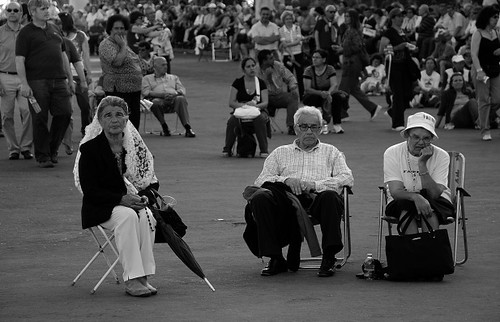OC & attachment
This article address some common issues that one comes across in working the OC. Firstly, generally speaking the OC does not have difficulty establishing attachments and this is a good asset as it allows the therapeutic relationship to develop in a normal way. Personality types that tend to have attachment difficulties are the narcissist, schizoid, borderline, avoidant an on occasion the antisocial personality. An ability to develop attachments is a definite plus when it comes to counselling the OC personality type.
OC & the Free Child
The other positive in counselling the OC is the Free Child ego state is overly constrained. The OC needs to let go, lighten up, become more carefree and irresponsible at times. This is a nice thing to have happen which assists the counseling process. One of the main problems in counselling the anti social personality type is they have to give up some FC. Their Free Child is not constrained enough and they are too hedonistic. Giving this up is not naturally good thing to do. They have to give up some of their fun FC whereas the OC has to bring more FC fun into their life.
As a consequence of these two points the obsessive/compulsive personality type is often quite amenable to counselling and can make some quite significant changes in how they think, feel and behave.

Free Child
Behavioral contracting with the OC
To bring out the FC counselling can work at a behavioral level where the OC has homework to do FC activities. Fairly simple and straight forward. Homework is given and if it is carried through (which it usually is as OCs tend to be responsible) one then works through the feelings and reactions the person had when the homework is carried out. One of the keys here is guilt free fun.
If the individual reports that some of the homework was fun the counsellor must make sure it is guilt free fun. That is whilst doing the activity they did not feel guilty about it for whatever reason. Guilty fun does not count as fun. Always make sure the client gets to articulate what is fun for them and the counselor must not project their fun onto the client. The OC may be susceptible to this as they can be quite out of touch with their FC and basically have no idea. Indeed they may need to experiment with a variety of ways in order to find out what is right for them.
In working with the OC one can do the old psychotherapy trick of using the pathology to get to the cure. Many OCs like to make charts, lists and spreadsheets. The therapist can use this by setting homework exercises that involve such charts and lists. For example
Make a list of ways of having fun - no less than 5 and no more than 10 items to be included.
Make a spreadsheet listing when they were FC and when they were not during each day of the week. Listing the activity they were doing when they were being FC and the activity they were doing when not in FC.
Make a chart of when they were responsible for others and when they were responsibility free. Again this is to be done for the week on a daily basis.

For the responsible, life can seem like hard work and not much fun.
Such homework taps into the natural style of the OC (such a list making) and uses it to their advantage. However one needs to be careful doing this and only continue with it if it succeeds. It must only be used as long as the OC does not get lost in the charting and listing and actually does get to the fun without too much difficulty.
Of course the purpose of the exercise is for the OC to become aware of how they would like to have some FC fun and to get an understanding of how much time they spend being responsible and avoid experiencing FC. This must the translate into them actually experimenting with the FC in the ways they have come up with. If it does not translate in that way then give up on such homework as that only supports the pathology.
Once the list of potential FC behaviour has been identified then, as just mentioned, the OC needs to go and do the behaviour and report back in the next session how that went, what they felt about it all and so forth. Of course the list of possible options is enormous. From listening to music, getting a massage, bush walking, craft activities, meeting friends, dinner, movie and so forth.
Once identified the the OC makes homework contracts to do the behaviour. Again one can use the pathology to get to the cure. Invite them to plan doing the FC in a detailed and systematic way. If it is to meet with friends at a coffee shop. They will have to make a list of the friends, list the phone numbers and then record who has been contacted and who has not and so forth. Setting the time of meeting, the place, making the booking and so forth. A perfect task for the OC. Indeed the OC can be a good administrator because they are organized like this, as long as they do not get too lost in the detail such that little in the end gets achieved. The therapist needs to make sure the FC activity does actually occur and it feels like fun for the person. If this does not happen then the therapist would not go about setting homework exercises in this way.

Be perfect
As I mentioned before this approach uses the natural talent of the OC (organizational ability) to achieve the cure. It also does one other thing that is another old psychotherapy trick. It’s called playing with the neurosis. This can be a powerful therapeutic approach but it is also more risky. In making such homework contracts it can expose the funny side of their neurotic behaviour. The client gets to see the funny side of his list making or orderliness which disempowers the neurosis. It defuses the potency of the compulsive behaving and obsessive thinking because they are seen in a humorous light. If the client can begin to look at his difficulties in a humorous way that is a significant therapeutic development. The danger with this, is the person can at times think you are making fun of them or not taking them seriously which of course would only damage the therapeutic relationship and the therapeutic goals.
The OC, FC & relational contact
In the FC contract setting one needs to note how much of it involves contact with others. How much of it involves relating to others. Listening to music, doing craft, bush walking and even playing with pets may not involve any contact with other humans. In the contracting process one is wanting at least some of the FC to involve relating to other humans, such as with the meeting friends or going to a movie with a friend and so forth. There is nothing wrong with FC activities that are solitary but if there are none or very few that involve relating to other humans then psychologically that is a problem.

Even if the FC activity does involve relating to others one is also wanting to make an assessment about the depth of relating. Again if one meets with friends for a drink and the conversation is only ever light discussion that is not OK if it is all or most of the time. One is looking for FC to FC contact with others that has of some emotional depth. That can involve active ‘deep’ discussion about feelings and so forth or it may be two people simply sitting close together not saying much as they watch television. One is wanting the client to report some kind of significant FC contact with others in some of the FC to FC contact. Again this is only expected to be some of the time. Finally the most obvious example of intimate FC contact is in a sexual relationship. Sex is (or at least is meant to be) Free Child. The OC can make all sorts of lists and spreadsheets about their sexual activity, in all sorts of ways, which can also allow them to see the funny side of their behaviour.
FC with client and counsellor
What better way for the OC to experience some FC than in the relationship with the therapist. If there is a healthy amount of FC to FC transactions between the client and the counsellor that is a most desirable thing. There needs to be some good hearty laughter in most sessions. This applies with any client but especially with the OC client. Humor in the therapeutic relationship is productive and health promoting and it makes doing therapy more appealing for the therapist as well.

Script work with the OC
Above I have discussed the behavioral work that a therapist can do with the OC personality type. This is done inconjunction with script work. The OC basically has trouble accessing their Child ego state and spends too much of their time in the Parent and Adult. Most injunctions are going to reflect that state of affairs. So common injunctions for the OC are:
Don’t enjoy, Don’t get your needs met, Don’t be a child, Don’t feel.
The drivers are likely to be:
Be perfect, Be strong and Try hard for those OCs who get lost in the detail and don’t actually achieve much in the end.
Graffiti

























